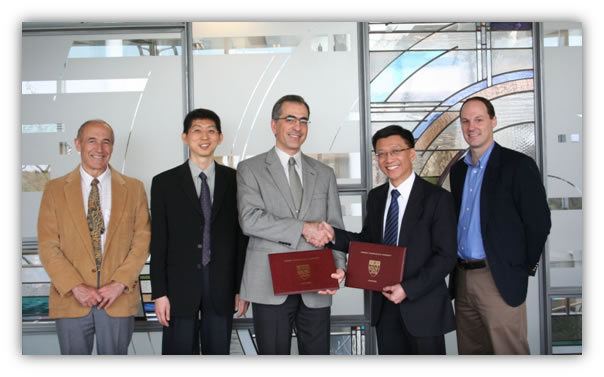Meeting the challenges for low-power System-on-Chip (SoC) Design
As designs become more complex and functional, power consumption is becoming the major design consideration and bottleneck in many portable applications.
Nanyang Technological University (NTU) has signed a Memorandum of Understanding (MOU) with the University of Michigan to advance research in the area of low-power RF/mm-wave ICs; energy harvesting; ultra-low power wireless sensor node design; and biomedical ICs.
During the past decade, we have seen the integration of distinct circuits and systems on a common deep submicron CMOS platform, reflecting a System-on-Chip (SoC) implementation for portable applications. At the same time, the power consumption of many building block circuits has been reduced from watts to milliwatts and even microwatts, while the speed or bandwidth of the resulting circuits, systems, and devices continues to improve.
We are now aiming for a new generation of ultra-low-power SoCs, or “green” SoCs, for mobile communication and computing devices that can run on so little power that they can be either self-powered (using innovative energy harvesting techniques) or need to be recharged only every few months, without compromising the system bandwidth and performance. These green SOCs will have an improvement in power consumption by two to three orders of magnitude over what is currently available, moving toward nanowatt integrated circuits and systems.
With designs growing in complexity and more functionality being packed into smaller pieces of silicon, power consumption is becoming the major design consideration and bottleneck in many portable applications. In addition, expensive fabrication costs and very short time-to-market requirements have made it nearly impossible for any single engineering team to build complex SoCs.
To address these issues, a collaborative effort between Nanyang Technological University (NTU) and the University of Michigan (U-M) has been initiated and will focus on new discoveries and innovative circuit design techniques to reduce the power consumption at three levels, namely circuits, systems, and devices. The relationship between the two institutions was clarified in a Memorandum of Understanding (MOU), 26 April 2010.

 Enlarge
Enlarge
NTU’s School of Electrical & Electronic Engineering, Division of Circuits and Systems has extensive experience in SoC, while U-M’s College of Engineering, Department of Electrical Engineering and Computer Science/Division of Electrical and Computer Engineering (EECS/ECE) has strong expertise in the area of low-power integrated circuit design, including its applications in the areas of energy, environmental, medical, security, and infrastructure. EECS/ECE maintains one of the largest and most vibrant graduate research programs in the United States, with more than 400 graduate students engaged in a wide variety of research to address the most critical problems facing the world today.
As part of the MOU, the two universities will conduct joint research, project design and development, and will also play host to staff and student exchange programs. In addition, both organizations will be involved in the coordination of joint academic events. The anticipated result will be significant advances in the areas of low-power RF/mm-wave ICs; energy harvesting; ultra-low power wireless sensor node design; and biomedical ICs.
 MENU
MENU